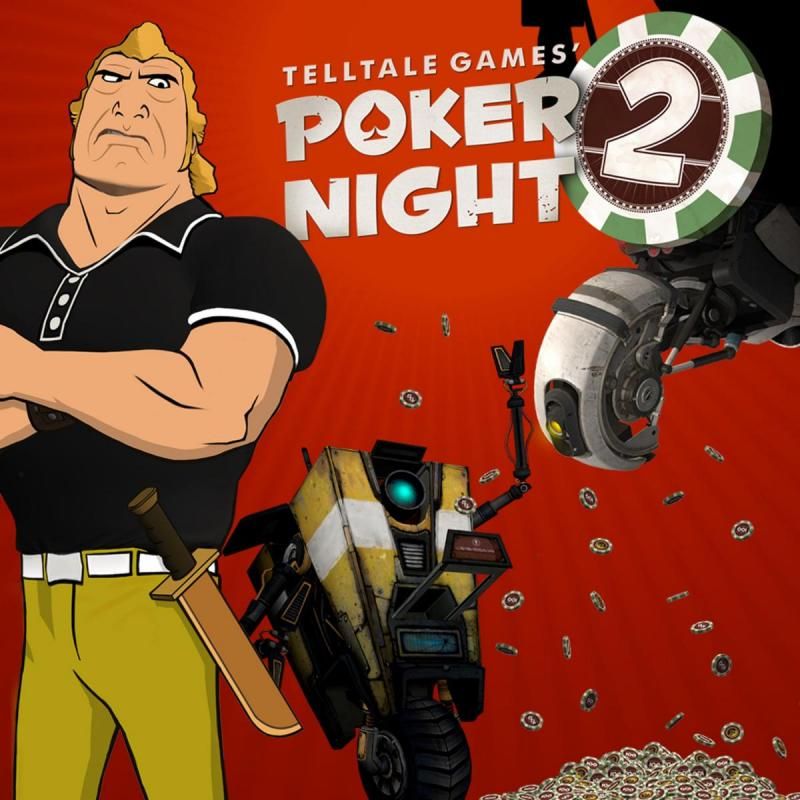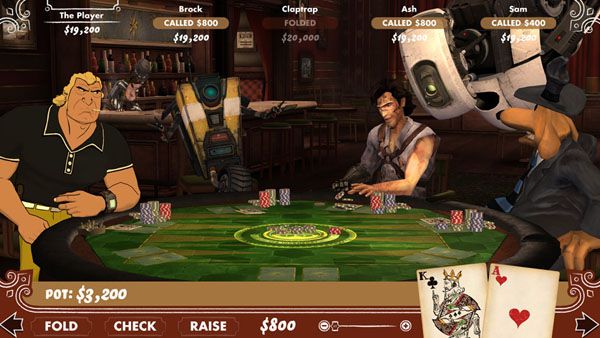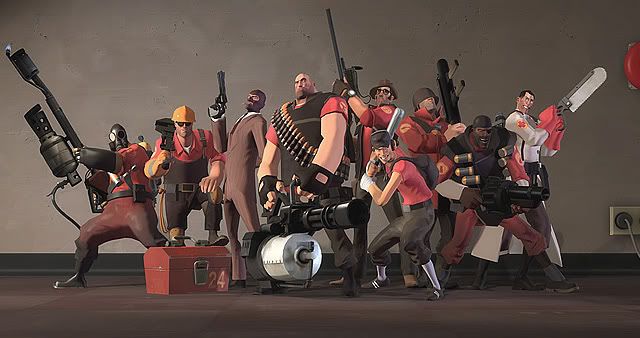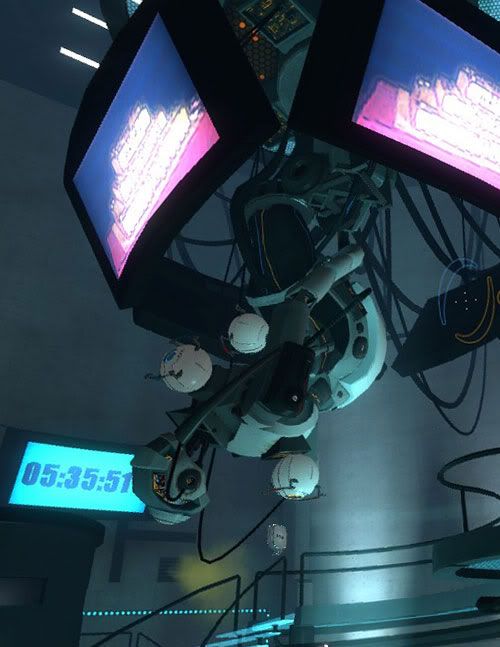I’ve been playing poker for most of my adult life. It’s not a regular thing for me – mostly at family gatherings or parties thrown by friends – but I know the game well enough to not completely embarrass myself, usually. Practice makes perfect, though, and a couple years ago Telltale Games provided a means to practice my game with Poker Night at the Inventory, allowing me the opportunity to throw down cards and chips with some familiar Internet characters. Did it need a sequel? No. Did it get one anyway? Yes.

The doors of the underground gaming establishment open once again to allow for a no-limit high-stakes poker tournament involving some faces you might recognize. Instead of just gaming culture, however, the scope of the invites has expanded somewhat. From the animated series Venture Brothers comes none other than Brock Samson, a quiet but intimidating presence at the table. Balancing the taciturn bodyguard is Borderlands 2‘s Claptrap, who’s vocabulizer seems to be stuck on ‘snark’ mode. Ash from Army of Darkness gives the little robot a run for his money, though, in addition to having any number of catch phrases at the ready. And last but never least is Sam of Sam & Max fame, who replaces his homicidal rabbit buddy at the table. And your dealer, in the interest of computerized fairness, is GLaDOS, from Portal.
If that line-up isn’t enough to get you to drop $6 US on this game immediately, here’s more incentive.
Texas Hold ‘Em, while iconic in terms of poker tournament play, is no longer your only option. The game of Omaha is also available. In case you don’t know, Omaha plays very similar to Hold ‘Em except each player is dealt 4 hole cards instead of two. A player can only use two of those hole cards to make the best hand possible. I feel like this game option is a bit more forgiving to beginners, as you have more options and opportunities to create a good hand, yet at the same time it can be confusing if you’re dealt an attractive-looking set of hole cards but can’t make the right hand work with only two of them. It’s one of the things that keeps the game fresh.

Your fellow players have their particular tells, some obvious and some subtle. This isn’t new, but the ability to make their tells more obvious and their playing more predictable or exploitable is. How, you ask? Buy them drinks. The lovely Mad Moxxi of Borderlands 2 is tending bar, and if you spend some tokens, won from playing or winning tournaments, she’ll bring some booze over to your opponents to loosen them up a bit. It adds a layer of strategy to your gameplay: at what point do you buy Ash that drink so he bets bigger and stops waiting to win on the river? In addition to the libations, tokens also unlock felts, cards, and chip designs that are part of each franchise represented by the game. Unlock a whole set and you’ll change the entire look of the Inventory. The apex of success is the bounty challenges. A random set of them are laid out for you at the start of a tournament. If you complete them all, you get the chance to win an item from one of your fellow players. Winning the item unlocks prizes in the games Team Fortress 2 and Borderlands 2. All from playing poker with some iconic characters who engage in witty banter. What’s not to love?
Functionally, Poker Night 2 is pretty flawless. The AI of its various moving parts seems pretty well implemented. I’ve only seen the occasional clipping issue. As much as I’ll get frustrated when a winning hand turns to a losing one thanks to a lucky draw on the river, that’s down to the nature of poker itself rather than anything the programmers did. Some of the conversations tend to repeat themselves, but this can be minimized by only playing a few tournaments at a time. Like most diversions of this nature, Poker Night 2 is best experienced in moderation.
Still, for its bargain basement price, great execution, and hilarious writing, I’d definitely recommend Poker Night 2. If you’re a fan of any of the characters mentioned, enjoy a good game of hold ’em, or just want the maximum bang for your entertainment buck, this is a fantastic deal.






